The NVIDIA GeForce GTX 980 Ti Review
by Ryan Smith on May 31, 2015 6:00 PM ESTNVIDIA's Computex Announcements & The Test
Alongside the launch of the GTX 980 Ti, NVIDIA is also taking advantage of Computex to make a couple of other major technology announcements. Given the scope of these announcements we’re covering these in separate articles, but we’ll quickly go over the high points here as they pertain to the GTX 980 Ti.
G-Sync Variable Overdrive & Windowed Mode G-Sync
NVIDIA is announcing a slew of G-Sync products/technologies today, the most important of which is Mobile G-Sync for laptops. However as part of that launch, NVIDIA is also finally confirming that all G-Sync products, including existing desktop G-Sync products, feature support for G-Sync variable overdrive. As the name implies, this is the ability to vary the amount of overdrive applied to a pixel based on a best-effort guess of when the next frame will arrive. This allows NVIDIA to continue to use pixel overdrive on G-Sync monitors to improve pixel response times and reduce ghosting, at a slight cost to color accuracy while in motion from errors in the frame time predictions.
Variable overdrive has been in G-Sync since the start, however until now NVIDIA has never confirmed its existence, with NVIDIA presumably keeping quiet about it for trade secret purposes. However now that displays supporting AMD’s Freesync implementation of DisplayPort Adaptive-Sync are out, NVIDIA is further clarifying how G-Sync works.
Meanwhile being freshly rolled out in NVIDIA’s latest drivers is support for Windowed Mode G-Sync. Before now, running a game in Windowed mode could cause stutters and tearing because once you are in Windowed mode, the image being output is composited by the Desktop Window Manager (DWM) in Windows. Even though a game might be outputting 200 frames per second, DWM will only refresh the image with its own timings. The off-screen buffer for applications can be updated many times before DWM updates the actual image on the display.
NVIDIA will now change this using their display driver, and when Windowed G-Sync is enabled, whichever window is the current active window will be the one that determines the refresh rate. That means if you have a game open, G-Sync can be leveraged to reduce screen tearing and stuttering, but if you then click on your email application, the refresh rate will switch back to whatever rate that application is using. Since this is not always going to be a perfect solution - without a fixed refresh rate, it's impossible to make every application perfectly line up with every other application - Windowed G-Sync can be enabled or disabled on a per-application basis, or just globally turned on or off.
GameWorks VR & Multi-Res Shading
Also being announced at Computex is a combination of new functionality and an overall rebranding for NVIDIA’s suite of VR technologies. First introduced alongside the GeForce GTX 980 in September as VR Direct, NVIDIA will be bringing their VR technologies in under the GameWorks umbrella of developer tools. The collection of technologies will now be called GameWorks VR, adding to the already significant collection of GameWorks tools and libraries.
On the feature front, the newly minted GameWorks VR will be getting a new feature dubbed Multi-Resolution Shading, or Multi-Res Shading for short. With multi-res shading, NVIDIA is looking to leverage the Maxwell 2 architecture’s Multi-Projection Acceleration in order to increase rendering efficiency and ultimately the overall performance of their GPUs in VR situations.
By reducing the resolution of video frames at the edges where there is already the most optical distortion/compression and the human eye is less sensitive, NVIDIA says that using multi-res shading can result in a 1.3x to 2x increase in pixel shader performance without noticeably compromising the image quality. Like many of the other technologies in the GameWorks VR toolkit this is an implementation of a suggested VR practice, however in NVIDIA’s case the company believes they have a significant technological advantage in implementing it thanks to multi-projection acceleration. With MPA to bring down the rendering cost of this feature, NVIDIA’s hardware can better take advantage of the performance advantages of this rendering approach, essentially making it an even more efficient method of VR rendering.
Getting Behind DirectX Feature Level 12_1
Finally, though not an outright announcement per-se, from a marketing perspective we should expect to see NVIDIA further promote their current technological lead in rendering features. The Maxwell 2 architecture is currently the only architecture to support DirectX feature level 12_1, and with DirectX 12 games due a bit later this year, NVIDIA sees that as an advantage to press.
For promotional purposes NVIDIA has put together a chart listing the different tiers of feature levels for DirectX 12, and to their credit this is a simple but elegant layout of the current feature level situation. The bulk of the advanced DirectX 12 features we saw Microsoft present at the GTX 980 launch are part of feature level 12_1, while the rest, and other functionality not fully exploited under DirectX 11 are part of the 12_0 feature level. The one exception to this is volume tiled resources, which is not part of either feature level and instead is part of a separate feature list for tiled resources that can be implemented at either feature level.
The Test
The press drivers for the launch of the GTX 980 Ti are release 352.90, which other than formally adding support for the new card is otherwise identical to the standing 352.86 drivers.
| CPU: | Intel Core i7-4960X @ 4.2GHz |
| Motherboard: | ASRock Fatal1ty X79 Professional |
| Power Supply: | Corsair AX1200i |
| Hard Disk: | Samsung SSD 840 EVO (750GB) |
| Memory: | G.Skill RipjawZ DDR3-1866 4 x 8GB (9-10-9-26) |
| Case: | NZXT Phantom 630 Windowed Edition |
| Monitor: | Asus PQ321 |
| Video Cards: | AMD Radeon R9 295X2 AMD Radeon R9 290X AMD Radeon HD 7970 NVIDIA GeForce GTX Titan X NVIDIA GeForce GTX 980 Ti NVIDIA GeForce GTX 980 NVIDIA GeForce GTX 780 Ti NVIDIA GeForce GTX 780 NVIDIA GeForce GTX 680 NVIDIA GeForce GTX 580 |
| Video Drivers: | NVIDIA Release 352.90 Beta AMD Catalyst Cat 15.5 Beta |
| OS: | Windows 8.1 Pro |


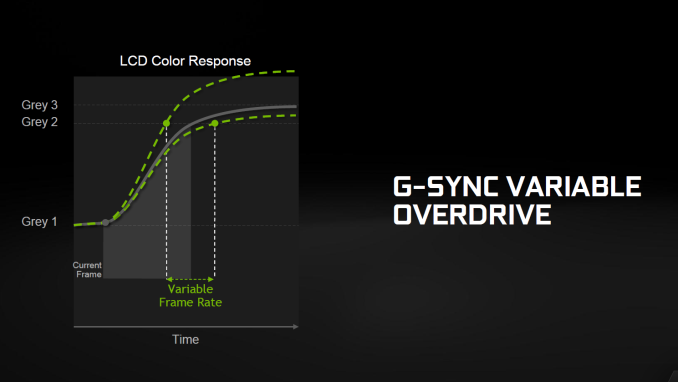
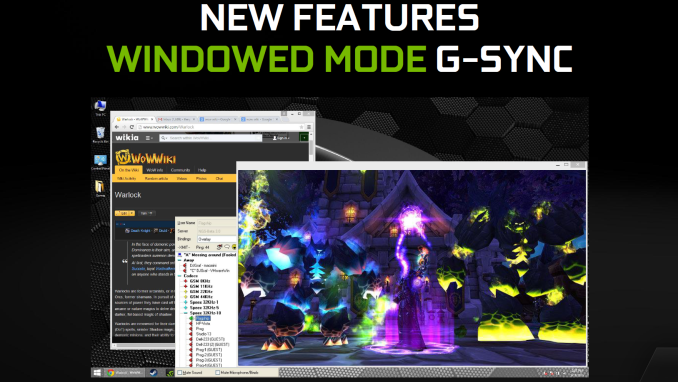
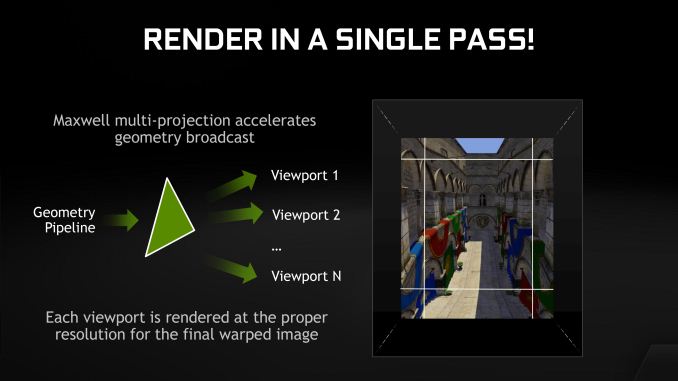
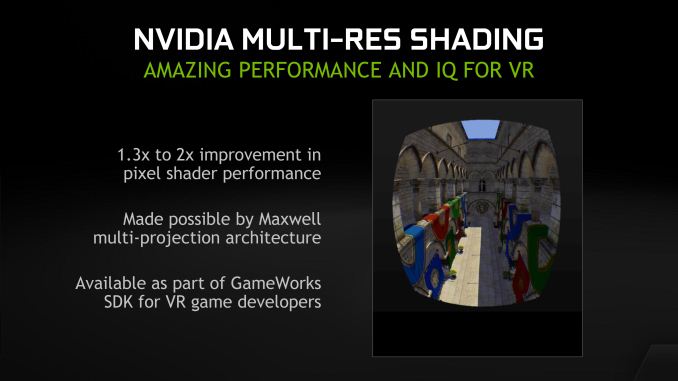
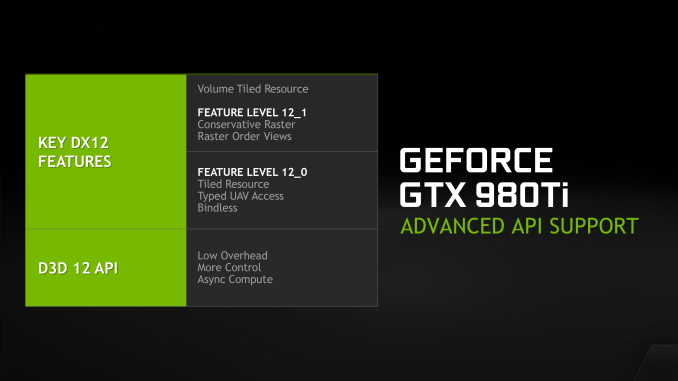








290 Comments
View All Comments
przemo_li - Monday, June 1, 2015 - link
Fiji is NOT gpu name.Its gpu segment name.
Just like VI, SI, and some more.
Its chip name if anything.
If we for a moment switched to CPU-speak, You just claimed that Puma is single CPU from AMD ;)
Refuge - Monday, June 1, 2015 - link
It is the name of a GPU Architecture. Which could be a one run chip, or it could have multiple versions based on binning.dragonsqrrl - Monday, June 1, 2015 - link
It's not a GPU architecture. GCN is a GPU architecture, Maxwell is a GPU architecture. Fiji is a GPU, GM204 is a GPU. This isn't exactly a new paradigm we're dealing with here. Oh dear, I think I might be telling someone something (aka trolling***). I've done it again.dragonsqrrl - Wednesday, June 3, 2015 - link
First, that's a terrible analogy. Puma is not a CPU, it's a CPU architecture, successor to Jaguar. Fiji is a GPU, I never once assumed or suggested that there will be a single Fiji SKU (that was all you), right now it's likely there will be 2 for the consumer market.I'm honestly not sure what you meant by "segment", perhaps you could clarify? Are you talking about AMD's XT/PRO convention? They're still the same GPU, pro is typically just a harvested XT.
Refuge - Monday, June 1, 2015 - link
They released more than four if you include mobile GPU's I believe it goes up 2 more to 6.dragonsqrrl - Monday, June 1, 2015 - link
What do you mean mobile GPU's? Are you talking about the 900m series? There are no mobile specific GPU's in that lineup. It's all binned GM204 and GM107 SKU's.eanazag - Sunday, May 31, 2015 - link
Interesting observation. I see the same behavior, but the situations are different. Both major graphics vendors are stuck on 28 nm. The 285 is a new product. AMD's graphic situation is not even close to the same as CPU. They are not even competitive in most of the markets for CPU. AMD will likely release a very competitive GPU, which is why NV is releasing the Ti now.dragonsqrrl - Sunday, May 31, 2015 - link
Yes, the 285 is a new product, and while it is an improvement and a step in the right direction, Tonga just isn't enough to address the issue of AMD's profit margins this coming generation, or make them anymore competitive in mobile (M295X). It would be as though Nvidia were selling the 980 at the $200 price point. Not exactly, but from a memory interface, die size, PCB complexity, power consumption perspective, that's basically what AMD is doing right now, with no solution forthcoming. But I guess it's better than selling Tahiti for $200."AMD's graphic situation is not even close to the same as CPU. They are not even competitive in most of the markets for CPU. AMD will likely release a very competitive GPU, which is why NV is releasing the Ti now."
Some might argue they aren't competitive in the dGPU market with Nvidia market share approaching 80%... some might say that's like Intel levels of dominance...
And I didn't say it's the same as their CPU situation, I said it's becoming more similar. While AMD will likely be competitive in raw performance, as I've tried to explain in my past 2 comments, that's kind of besides the point.
chizow - Sunday, May 31, 2015 - link
Yes, both are stuck on 28nm, but only Nvidia came out with a comprehensive ASIC line-up knowing we'd be stuck here for another 2 years (going back to 2H 2014). It is obvious now that AMD's cost-cutting in staff and R&D is starting to manifest itself as they simply can't keep up while losing ground on 2 fronts (CPU and GPU).The culmination of this will be AMD going to market with a full series of rebrands of mostly old parts going back to 2011 with a single new ASIC at the top of their stack, while Nvidia has fully laid out its arsenal with GM107 (1 SKU), GM206 (1 SKU), GM204 (2 SKU), and now GM200 (2 SKU).
Kevin G - Monday, June 1, 2015 - link
Is it unprecedented? I recall the Geforce 9000, GTS 100 and most of the GTX 200 series being various rebrands from 'generation' to 'generation'. In fact, the 8800GTS 512 MB, 9800GTX, GTS 150 and GTS 250 were all the same chip design (the GTS 250 had a die shrink but was functionally unchanged).nVidia has gotten better since then, well with the exception of the GF108 that plagued the low end for far too long.